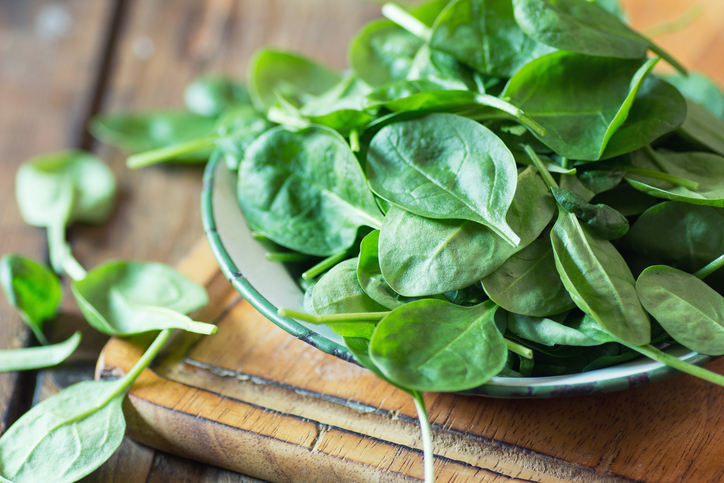11 High-Protein Vegetables You Need to Be Eating More Of

When you think about high-protein vegetables, what foods come to mind?
- Peas? Not a vegetable. (Peas are a member of the legume family.)
- Corn? Not a vegetable. (Corn, or maize as it is known to the rest of the world, is grain.)
- Beans? Not a vegetable. (Beans, of course, are also a member of the legume family.)
- Lentils? Not a vegetable. (Like beans and peas, lentils belong to the legume family.)
Technically, peas, corn, beans, and lentils are actually fruits. Along those lines, you probably already knew tomato is a fruit, but what about cucumbers, green beans, and squash, including pumpkin? Yep, all fruits.
You see, botanically speaking, a fruit is a seed-bearing structure that develops from the ovary of a seed-bearing plant. On the other hand, vegetables, which is not an officially defined botanical term, are all other edible plant parts, such as leaves, stems, roots, bulbs, and tubers.
Before rattling off a list of high-protein vegetables, it’s important to briefly mention protein quality.
Protein Quality: Complete or Incomplete?
One rub on veggies and other plant-based foods is that they contain “incomplete” protein, referring to the fact that they lack certain essential amino acids (EAAs). Briefly, when we’re talking about dietary protein, we’re actually talking about amino acids, which are the “building blocks” of protein. Out of the 20 amino acids, 9 of them are considered EAAs, or indispensable amino acids (IAAs), because they cannot be produced in the body. They must be consumed in the diet.
While it’s true specific plant-based foods may be low in certain amino acids (known as “limiting amino acids”), for some time now, the scientific community has dismissed the notions that plant-based proteins (which technically have a “complete” amino acid composition) are “incomplete” and that “complementary” plant proteins (e.g., beans and rice) be consumed at the same meal.1,2
Having said all that, research has quite consistently shown that protein from plants ranks lower than animal-based sources on scales of protein quality. This attempts to quantify how well the body is able to use the amino acids from food, how closely the EAA content of a food matches the body’s requirements, how well the body is able to digest the protein, and the bioavailability of the amino acids.
What’s more, recent research on protein quality suggests amino acids may need to be treated as individual nutrients, not simply as protein.3 Along those lines, the general consensus among the scientific community is that consuming an adequate amount of high-quality protein (at each meal and over the course of the day), preferably in combination with physical activity, is optimal for healthy aging.4 Having said that, future research is likely to enlighten us as to the practical significance of protein quality.
So, what does that leave us with?
The Top 11 High-Protein Vegetables
Does the protein from veggies count? Absolutely! There are certainly veggies with a modest percentage of protein. However, relying on veggies to meet your protein goals is probably neither practical nor optimal. Here’s a list of some of the most commonly eaten high-protein vegetables along with their nutritional content:
- Spinach: 5 g per 1-cup serving (cooked)
- Artichoke hearts: 5 g per 1-cup serving
- Broccoli: 4 g per NLEA serving (about 1 ½ cups)
- Asparagus: 4 g per 1-cup serving
- Brussels sprouts: 4 g per 1-cup serving
- Collard greens: 4 g per 1-cup serving (cooked)
- Beet greens: 4 g per 1-cup serving (cooked)
- Potatoes: 4 g per medium potato
- Mustard greens: 3 g per 1-cup serving (cooked)
- Kale: 2.5 g per 1-cup serving (cooked)
- Cauliflower: 2 g per 1-cup serving
Now, it’s true those numbers aren’t all that impressive and you’d be hard-pressed to optimize your protein intake through veggies alone. But keep in mind that you’re also likely to benefit from the increased intake of antioxidants, phytonutrients, fiber, vitamins, and minerals. And there’s no question that higher intakes of vegetables (and fruits) are associated with better health, longer lives, and reduced risk of various chronic diseases, such as cardiovascular disease.
Although the association between vegetable consumption and weight management isn’t quite as strong as you might imagine, when you increase your vegetable intake, you figuratively swing the scale in your favor by increasing food volume and reducing energy density. That is, by displacing foods highly concentrated in calories with veggies, you actually end up eating more total food but fewer overall calories. I mean, who doesn’t want to eat more while eating less?






